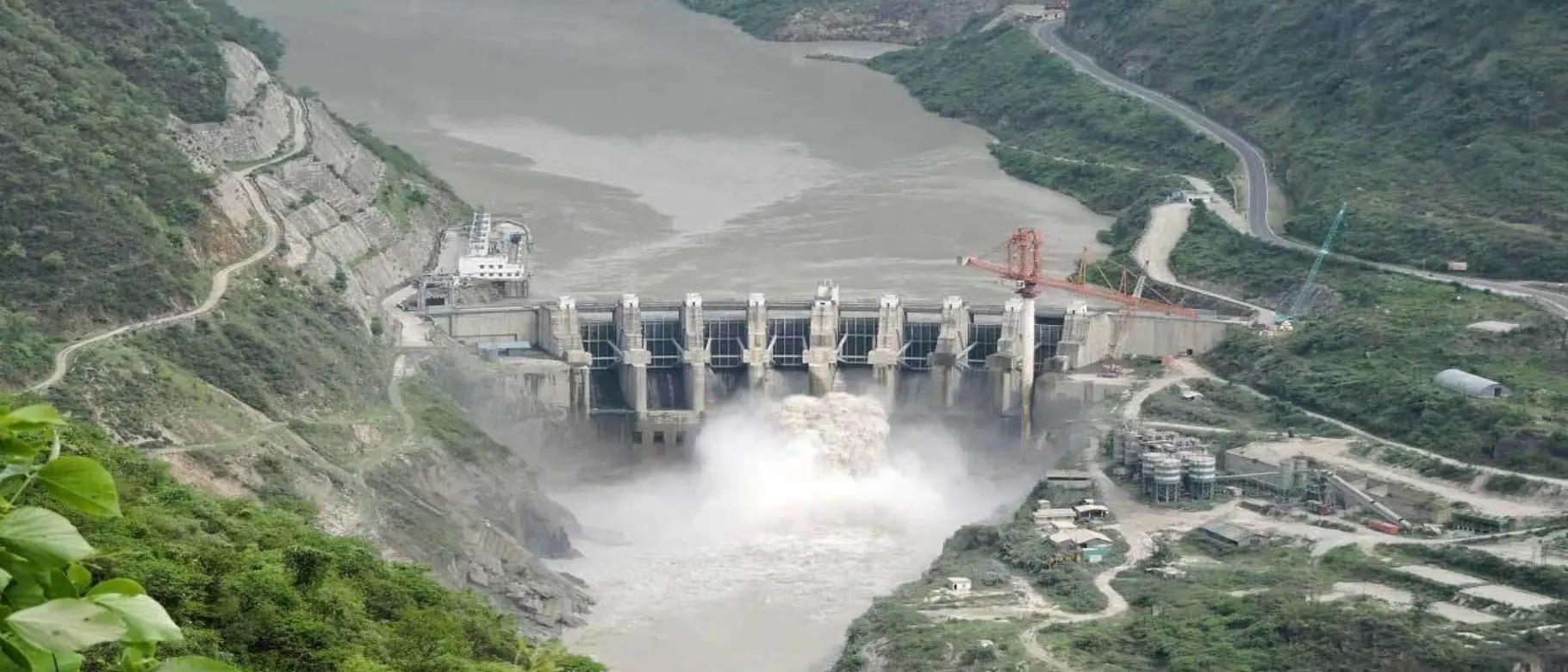
Run-of-the-river Hydroelectric Power Project in Uttarakhand by Alaknanda Hydro Power Company Limited
Run-of-river power on the Alaknanda
The 330 MW Sh rinagar hydropower plant uses the flow of the Alaknanda, a tributary of the Ganges, to generate electricity. It was commissioned in 2015 and feeds into the integrated NEWNE grid. It is planned to generate an average of 1,514 GWh of electricity per year and reduce emissions by 1,203,884 tCO2e annually.
Project goals
Clean electricity into the grid
The aim is to build and operate a grid-connected run-of-river power plant that replaces fossil-based power generation in the NEWNE grid. This will reduce greenhouse gas and air pollutant emissions and dependence on coal. 88% of the energy will be supplied to UPPCL under a PPA (30 years) and 12% will be supplied to Uttarakhand free of charge. The service life is set at 35 years.
Technical details
| Technologie | Verfahren | Besonderheiten |
|---|---|---|
| Wasserkraft | Laufwasserkraft mit Wehr und Triebwasserweg | 330 MW (4 x 82,5 MW); Inbetriebnahme 2015; Designabfluss 560 m³/s; Speicherfläche 324 ha (Pondage); Leistungsdichte ca. 101,85 W/m² |
| Wasserführung | 2 x 9,8 m HRT (~1,1 km) und 3,2 km Kraftkanal | Entsander 157 x 200 x 29 m; Forebay; Bypasskanal 297 m |
| Turbinen/Generatoren | Francis-Turbinen, vertikale Welle; Generatoren 13,8 kV | Turbinenwirkungsgrad 93,36%; max. Turbinenausgang 92,95 MW; Generator 97,06 MVA, PF 0,85; 166,66 rpm |
| Netzanbindung | 400-kV-Schaltanlage, Leitungen | LILO an 400-kV-Leitung Muzaffarnagar–Vishnuprayag; Doppelkreis zum PTCUL-Umspannwerk; Einspeisung ins NEWNE-Netz |
| Erzeugung | Design- und Sekundärenergie | 1.397 GWh + 117 GWh/Jahr; erwartete Netzeinspeisung 1.498.860 MWh/Jahr; PLF 52,3% |
Economic and social benefits
- 1
Employment
Up to 2,500 people will be needed during the construction phase; the operation will create additional jobs.
- 2
Power supply
On average 1,514 GWh/year for an electricity-deficient grid; 88% to UPPCL, 12% free of charge to Uttarakhand.
- 3
Infrastructure
The project supports the expansion of local infrastructure such as roads and telecommunications, including the construction of bridges and roads in the surrounding area.
- 4
Income
New direct and indirect jobs increase income security for people in the neighboring communities.
- 5
Education & Health
Scholarships, ITI training places, medical camps and health centers at the locations are planned.
- 6
Environmental measures
Compensatory afforestation (e.g. 347 ha in Lalitpur) as well as catchment area treatment with afforestation (7,594 ha) and pasture development (3,150 ha).
- 7
Tourism
According to sources, the project can further strengthen existing regional tourism.
Global climate significance
CO₂ reduction
The expected reduction amounts to an average of 1,203,884 tCO2e per year by displacing fossil-based electricity generation.
Fossil conservation
The use of hydropower reduces the consumption of coal, oil and gas in the NEWNE grid.
Air quality
In addition to greenhouse gases, air pollutants such as NOx and SO2 are also reduced in comparison to fossil fuel production.
Run-of-River
As a run-of-river power plant without large reservoirs, project-specific emissions (e.g. from reservoirs) are not to be recognized according to the methodology.
Conclusion
The project reliably supplies renewable electricity from hydropower and thus relieves the burden on a fossil-based grid. At the same time, social programs and environmental measures are planned. The figures and effects are described in the documents provided.



